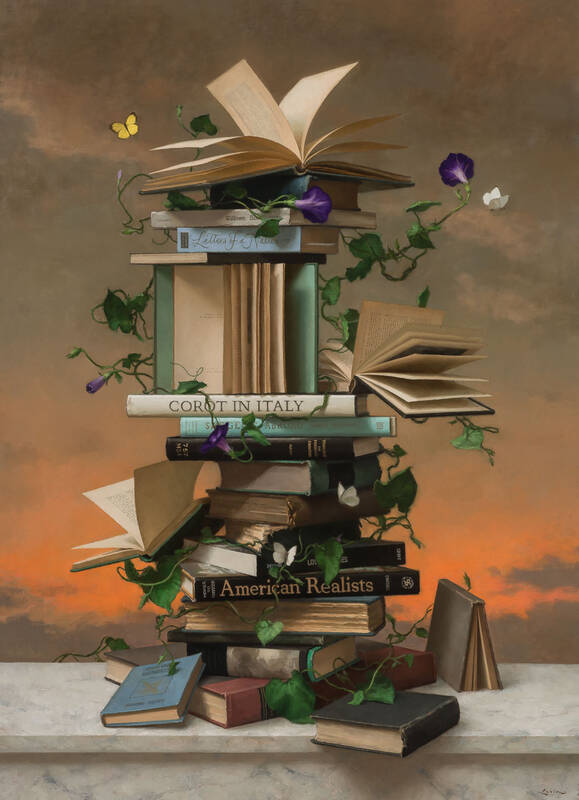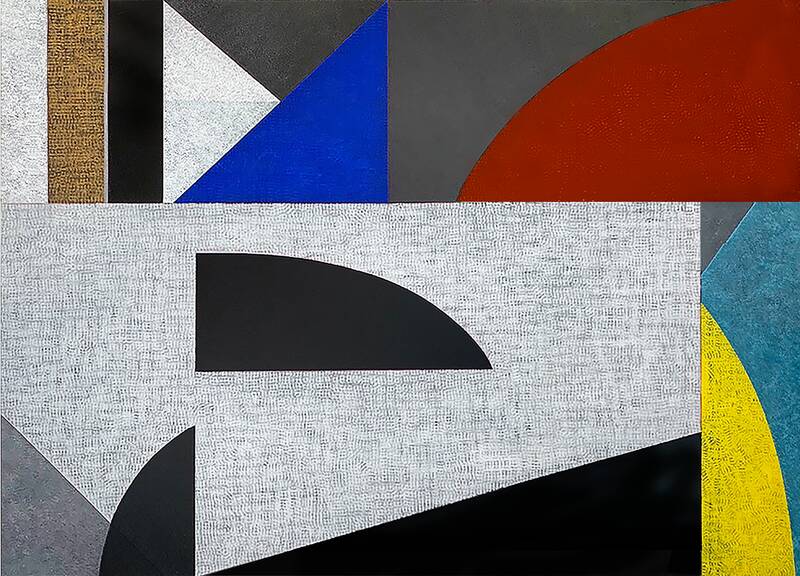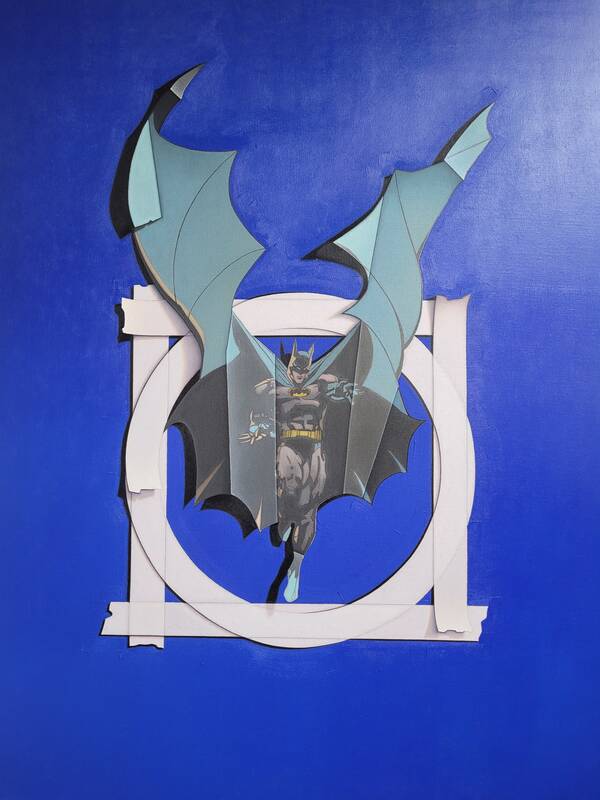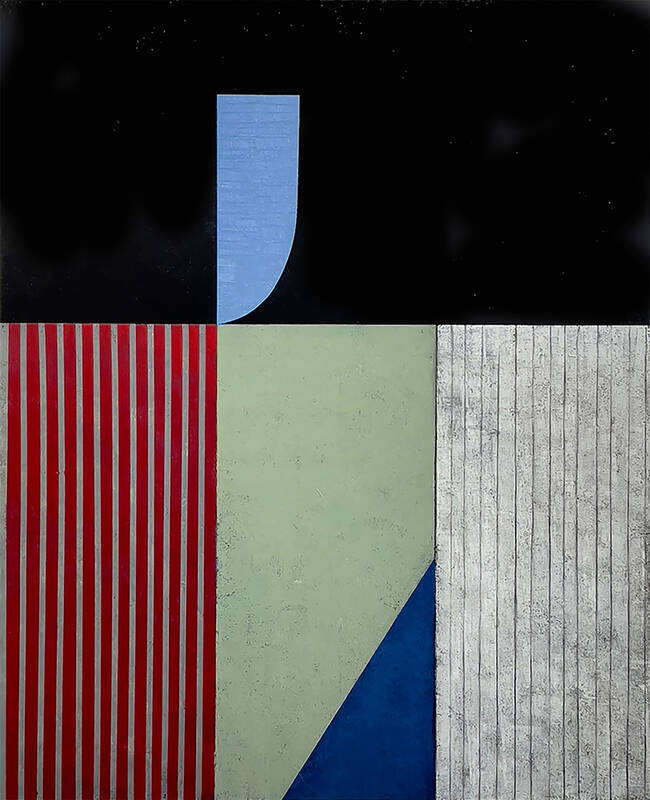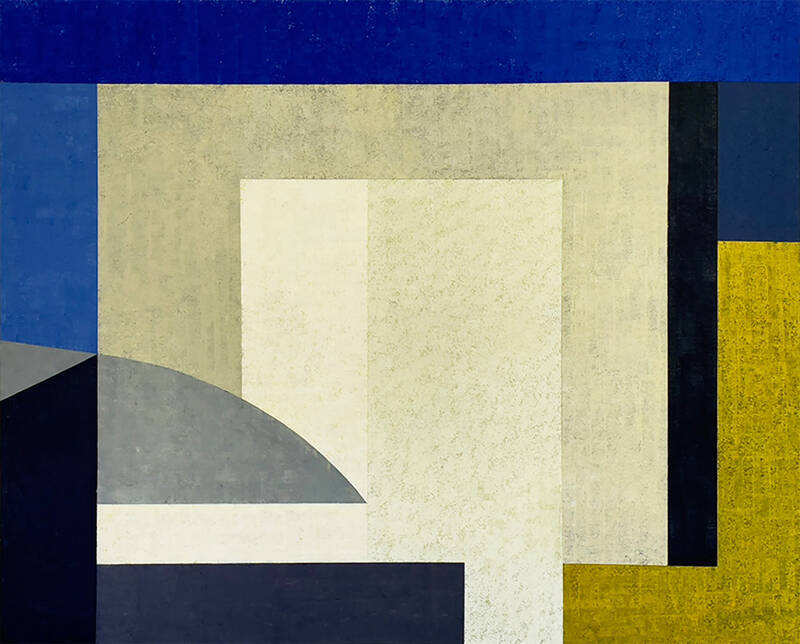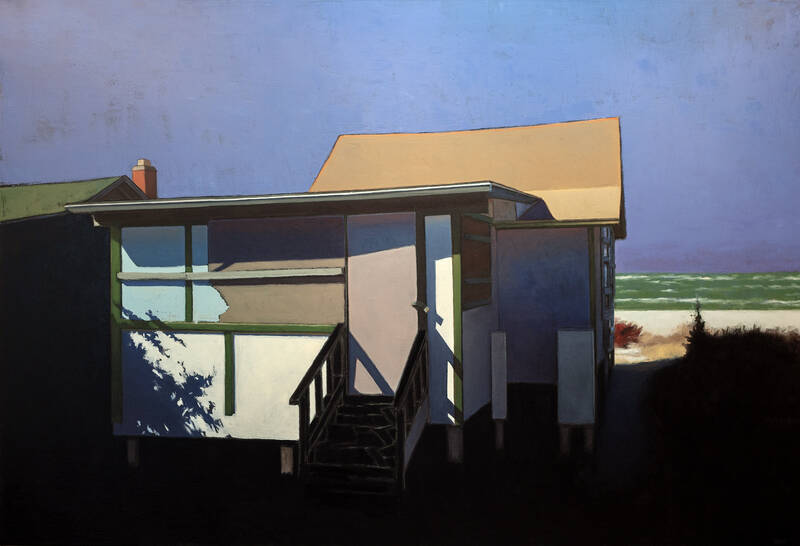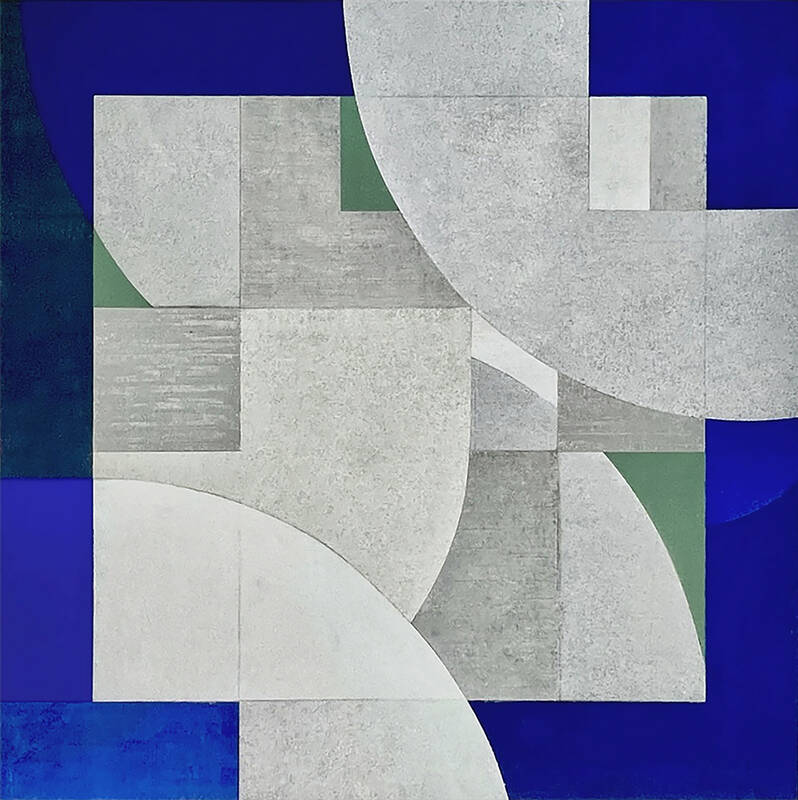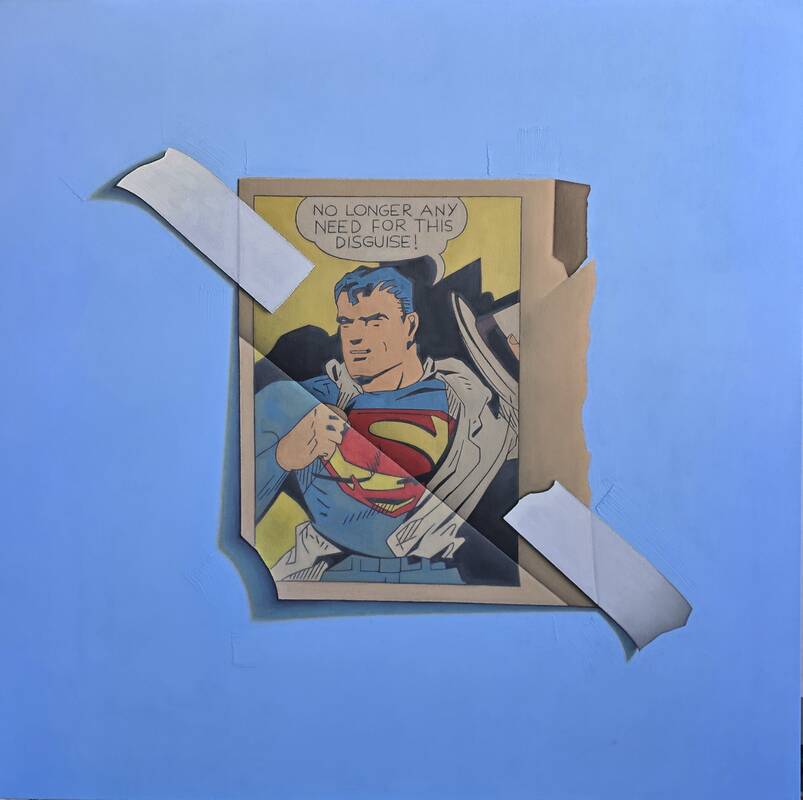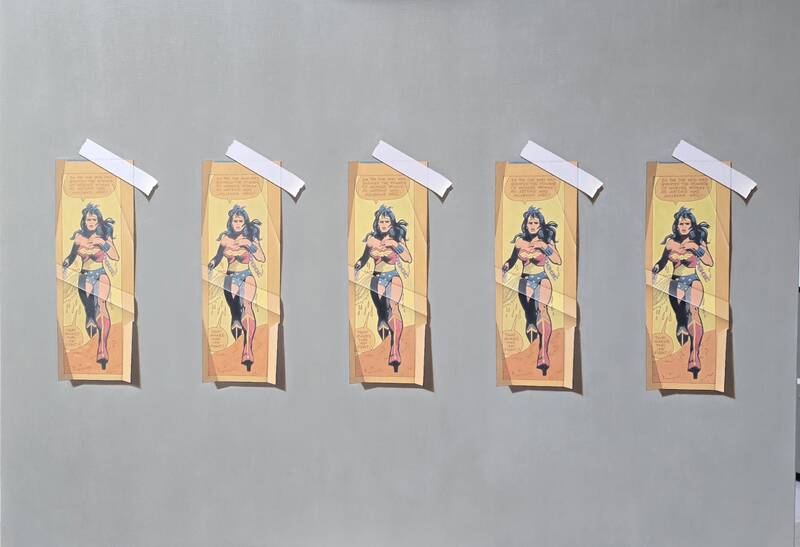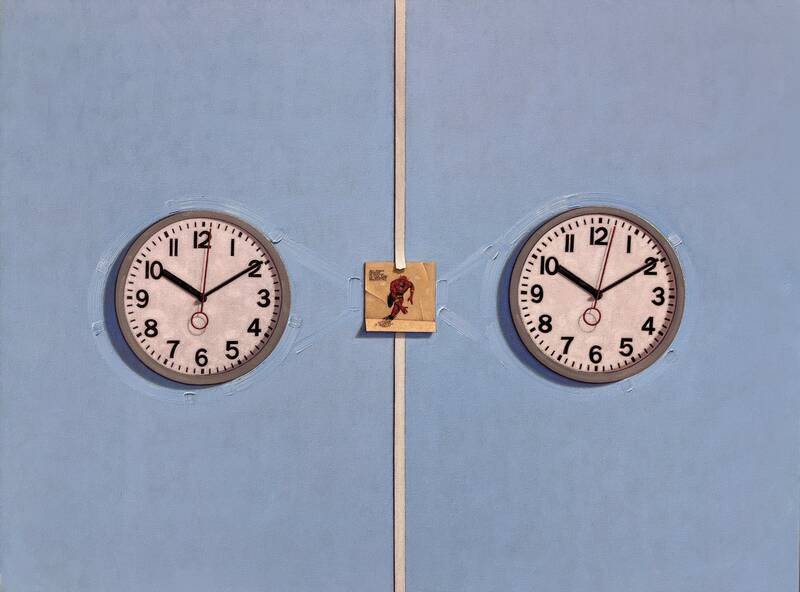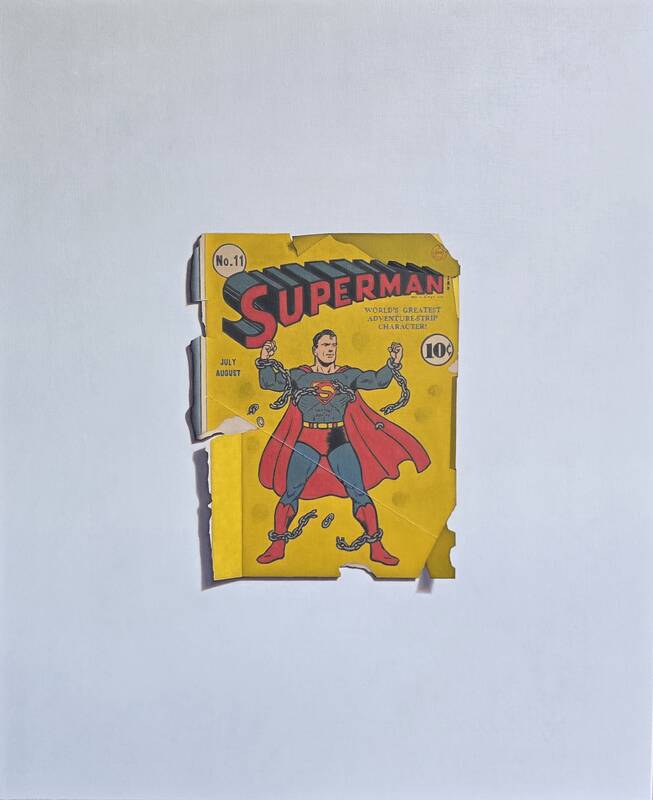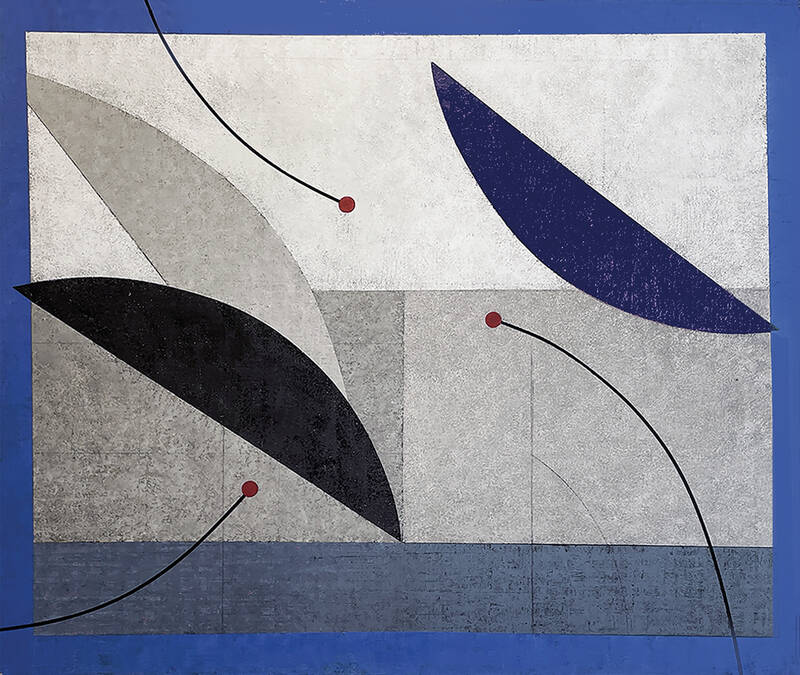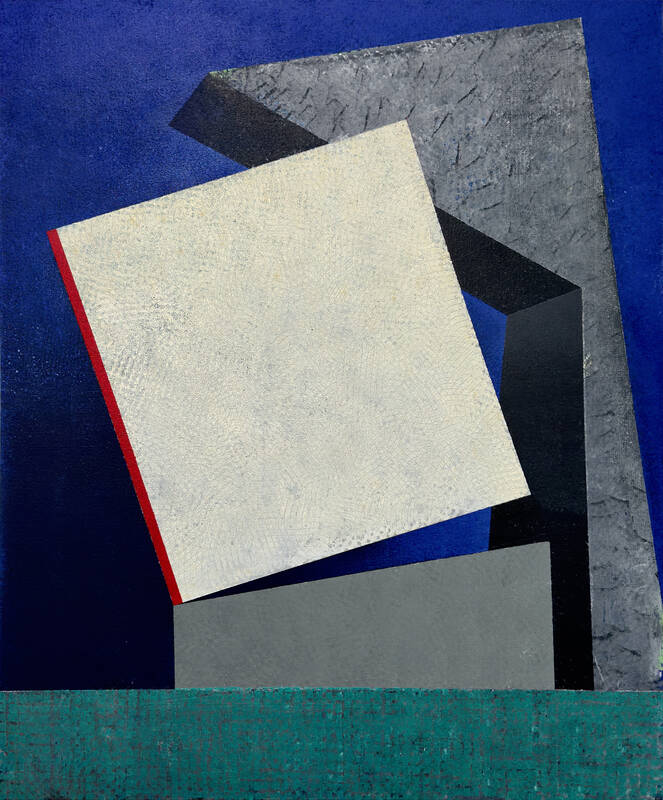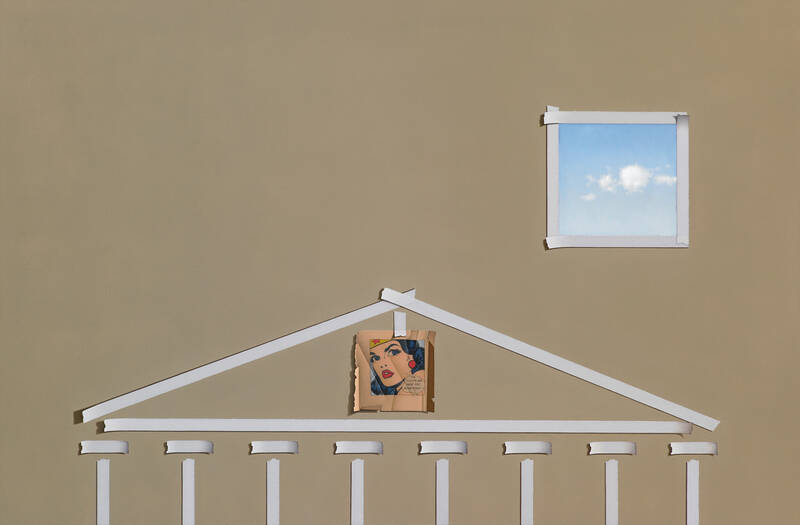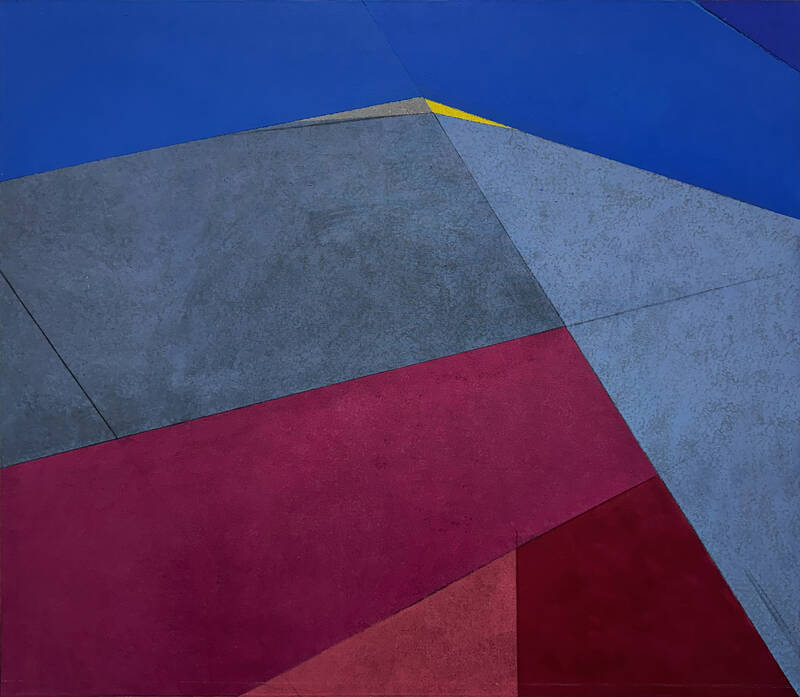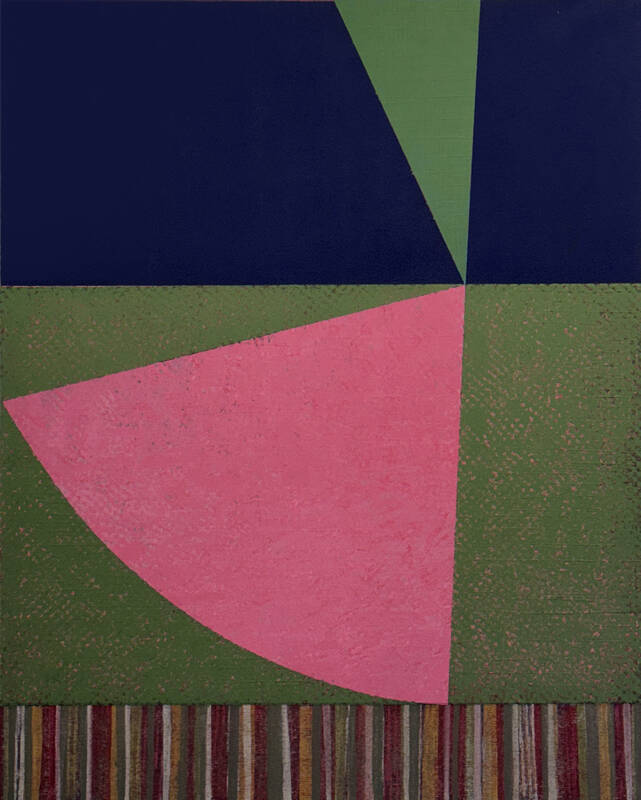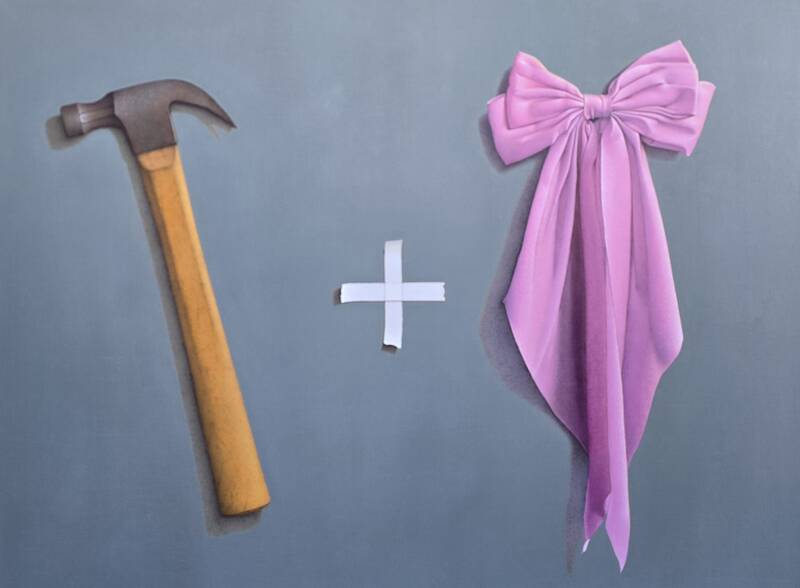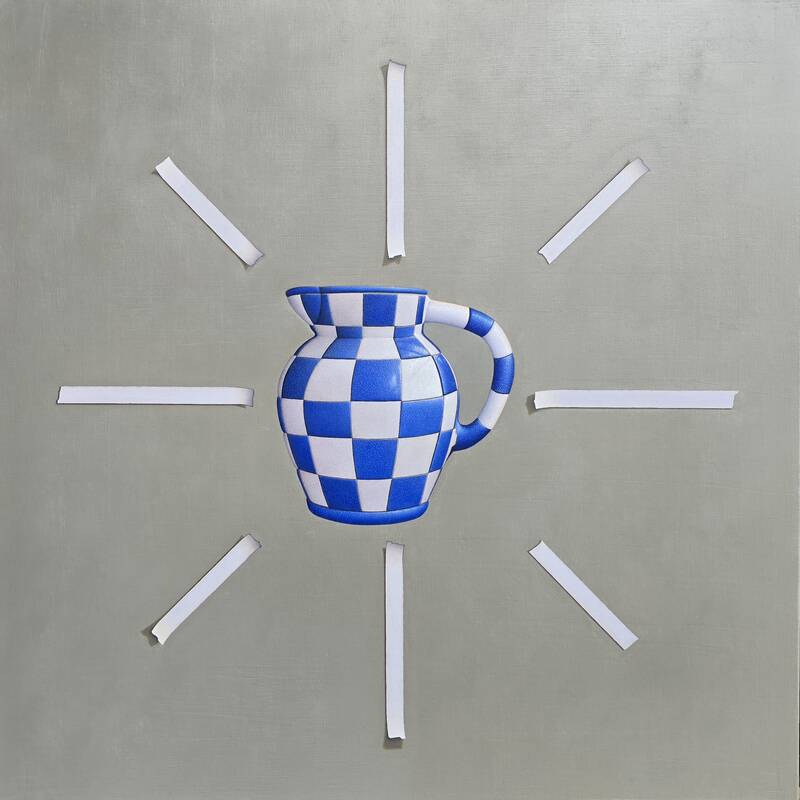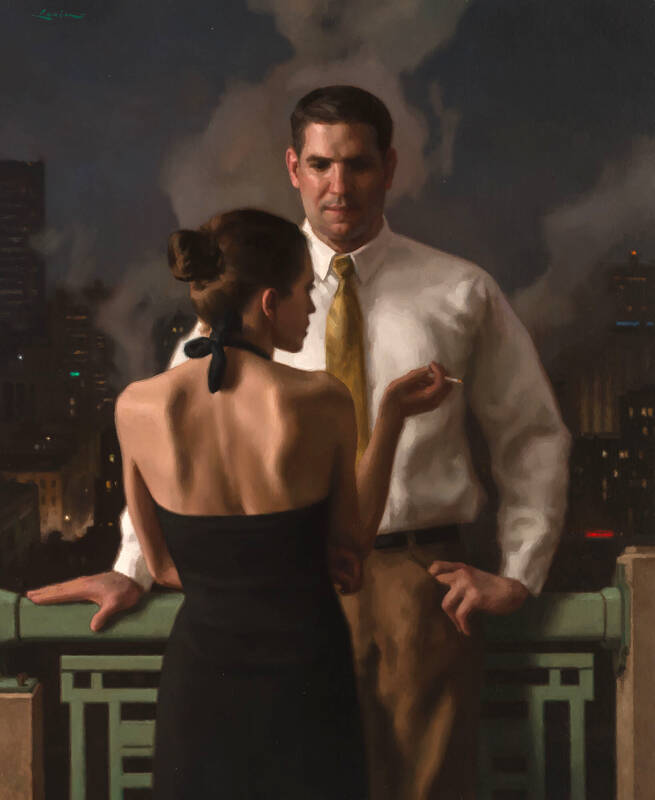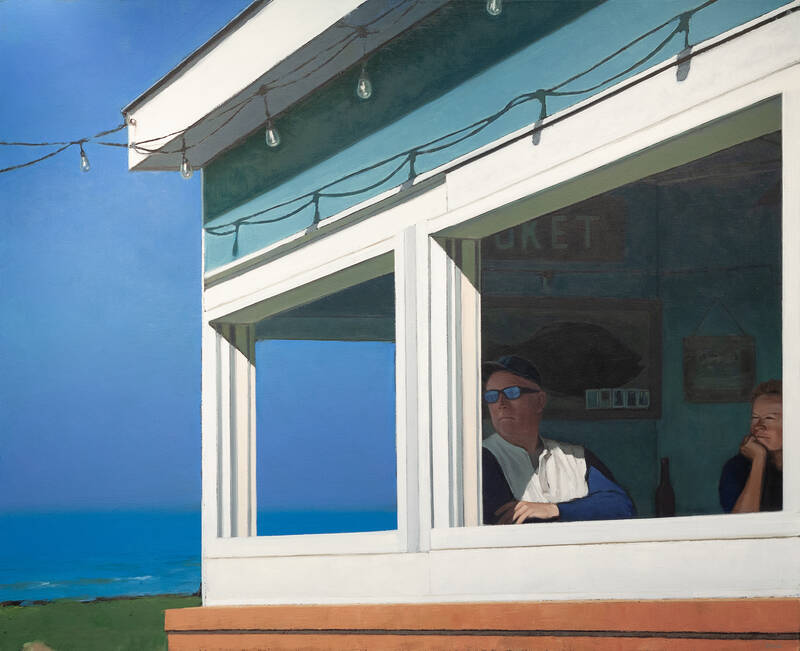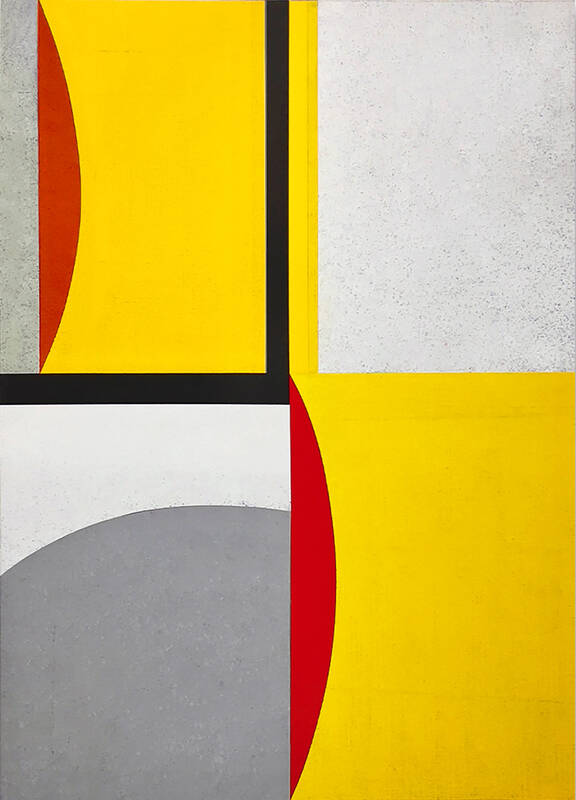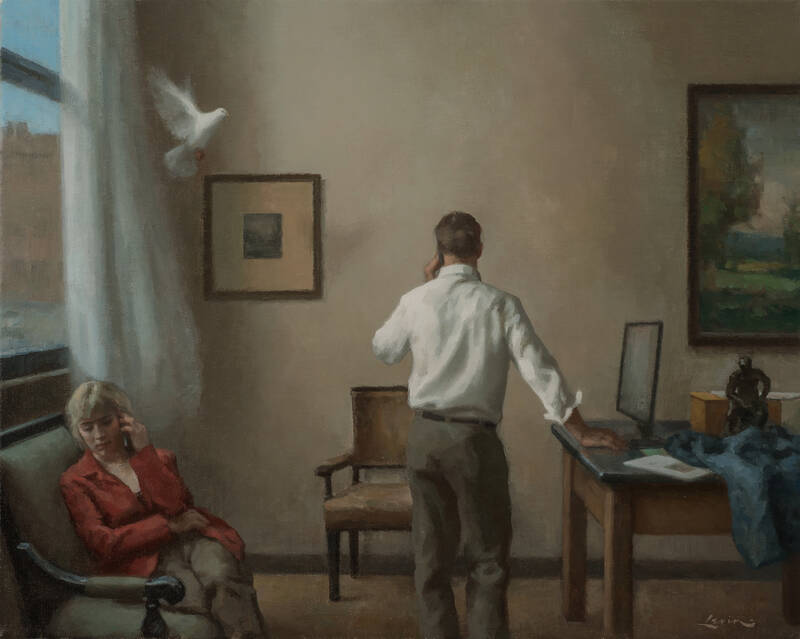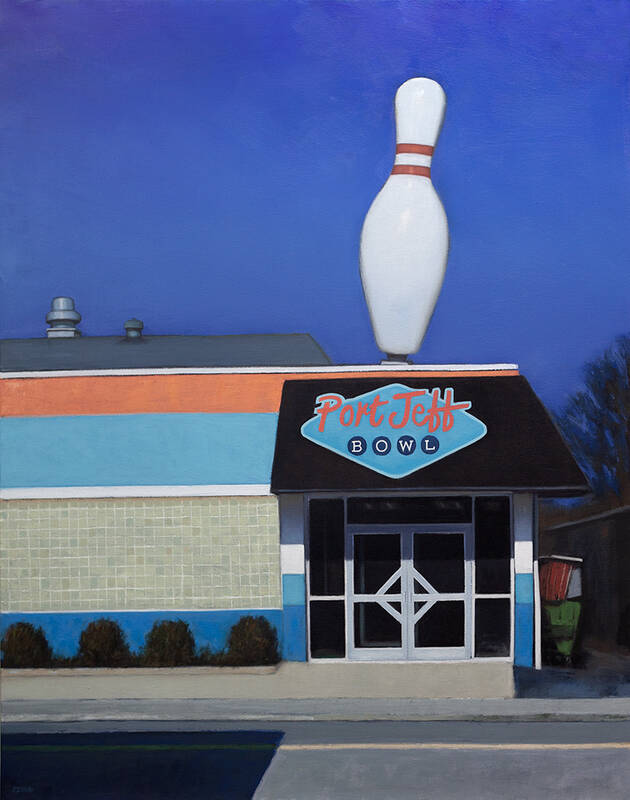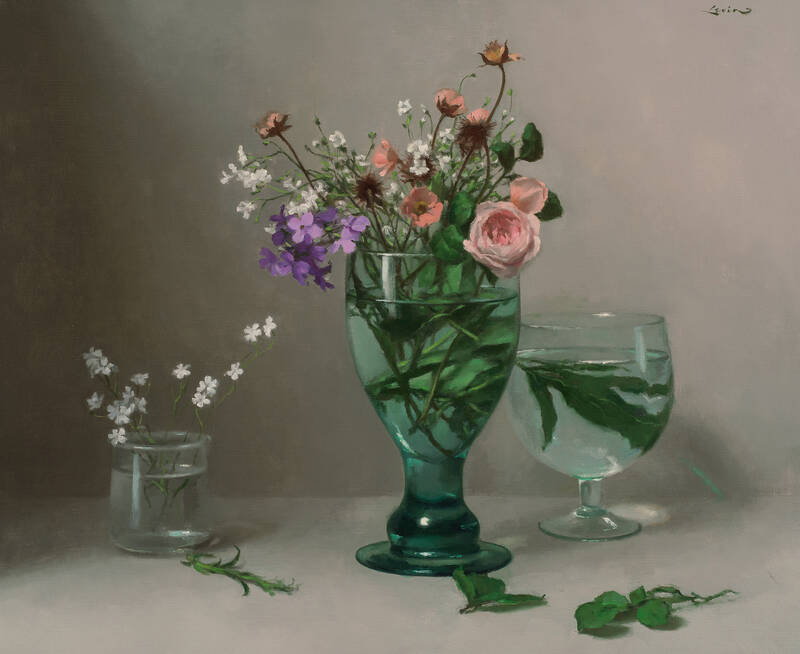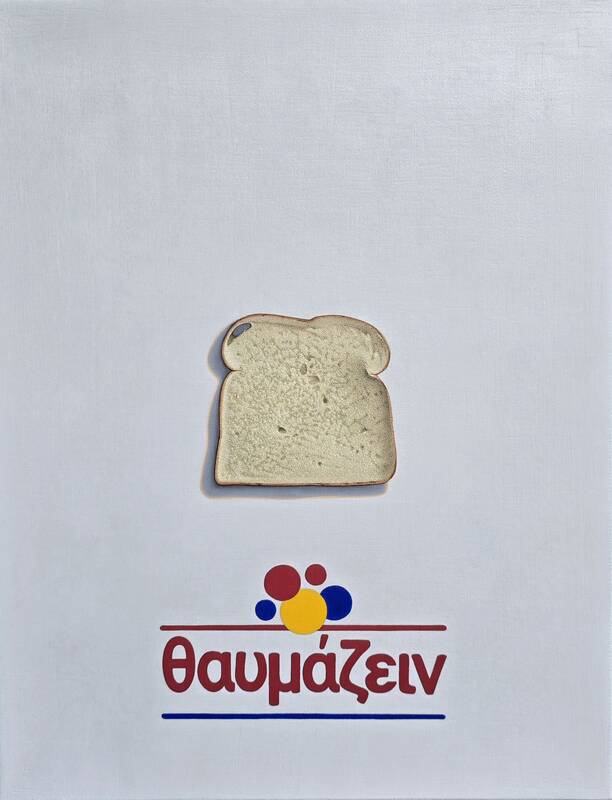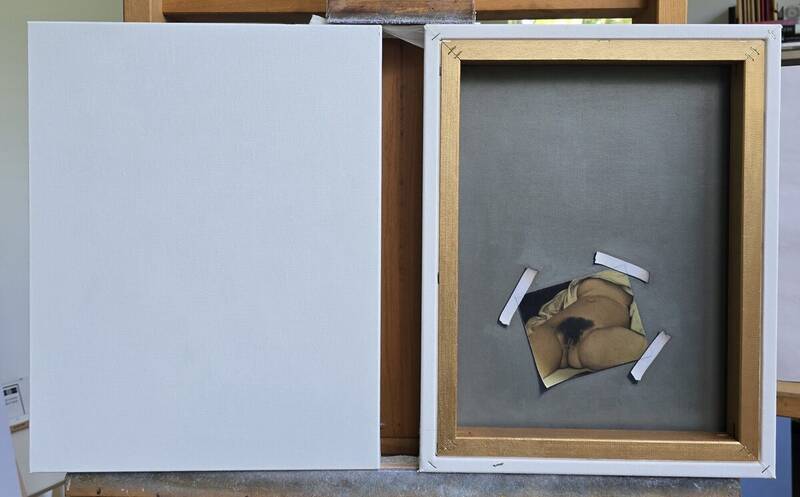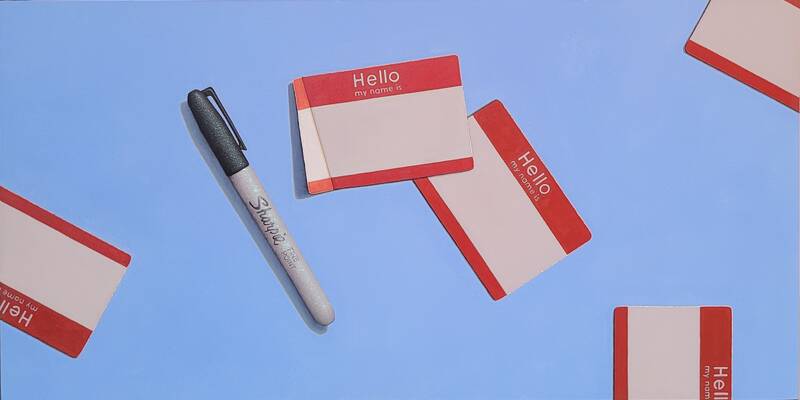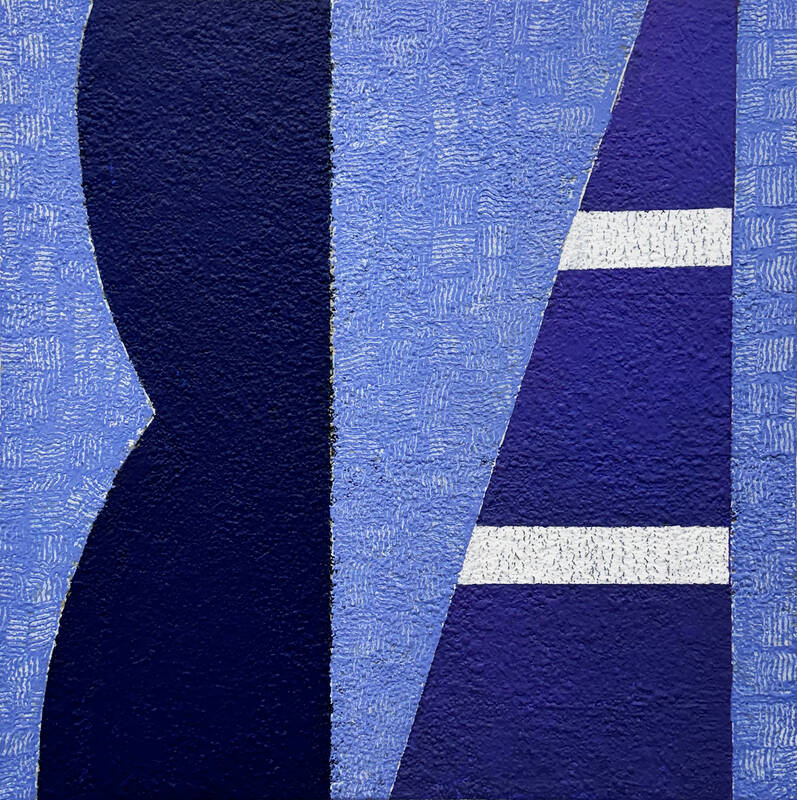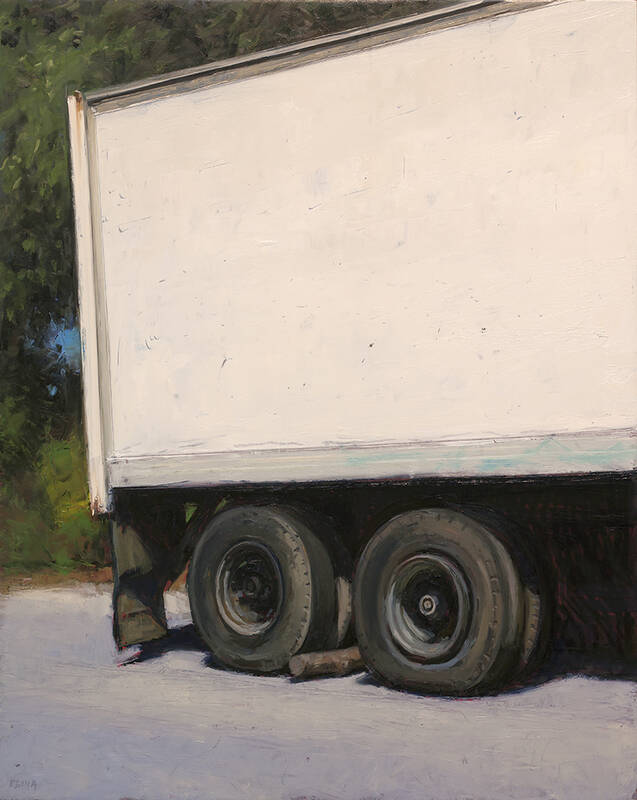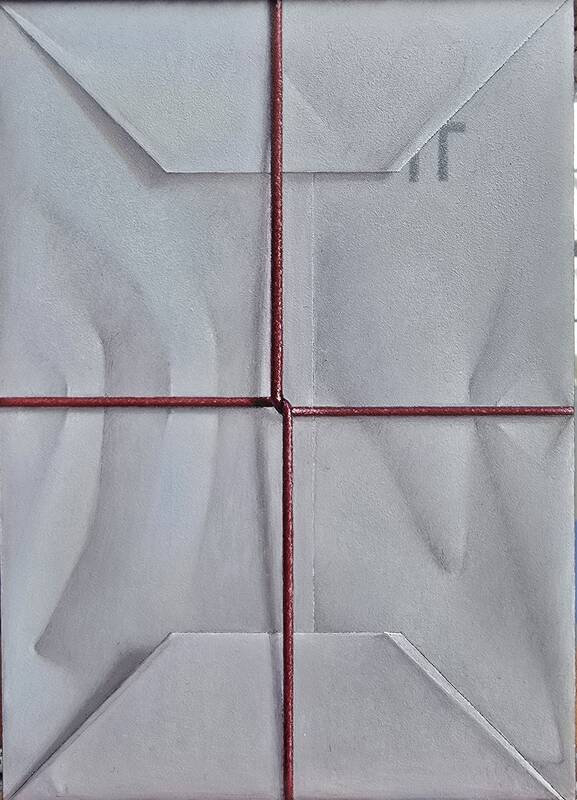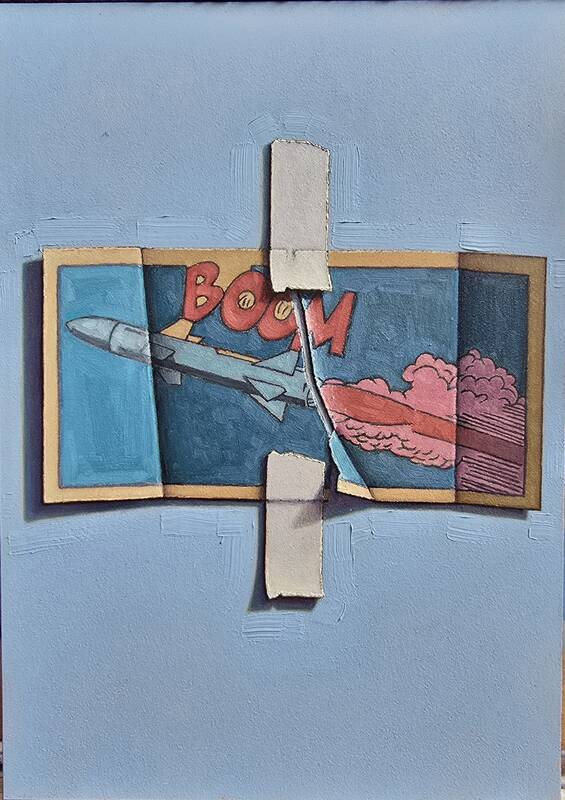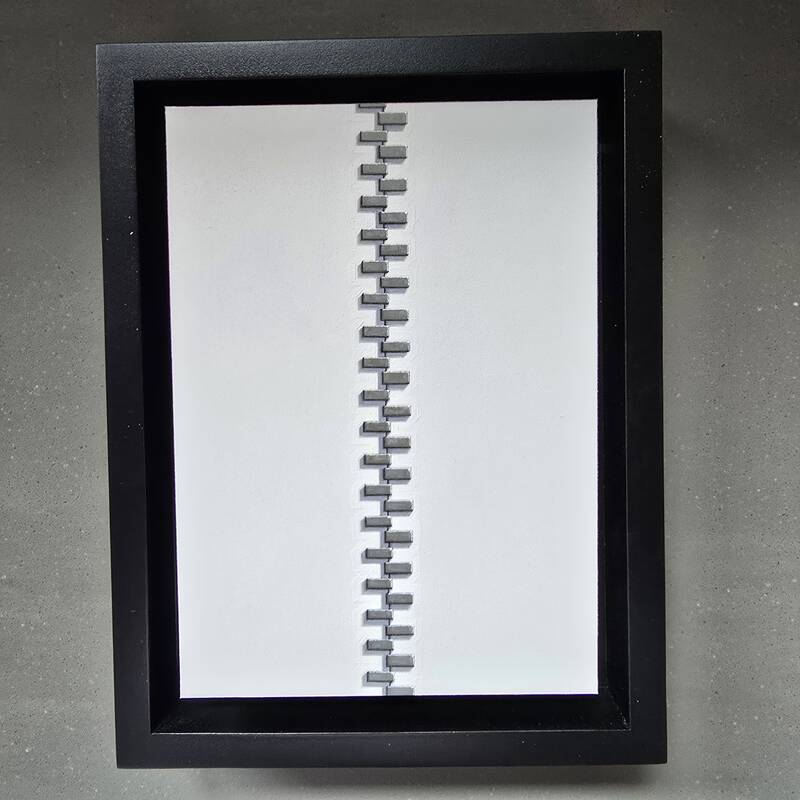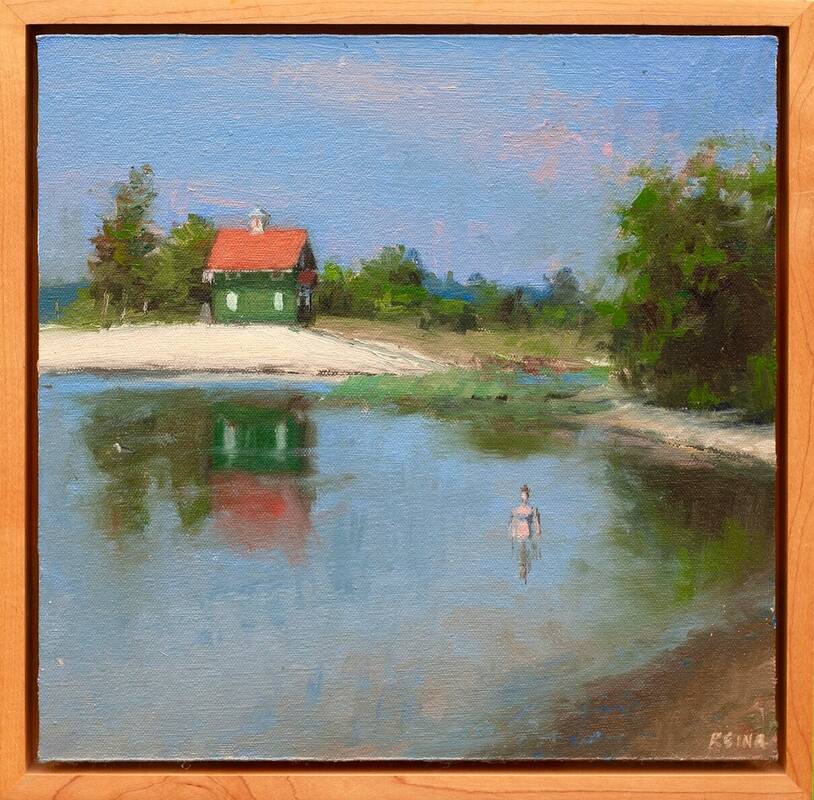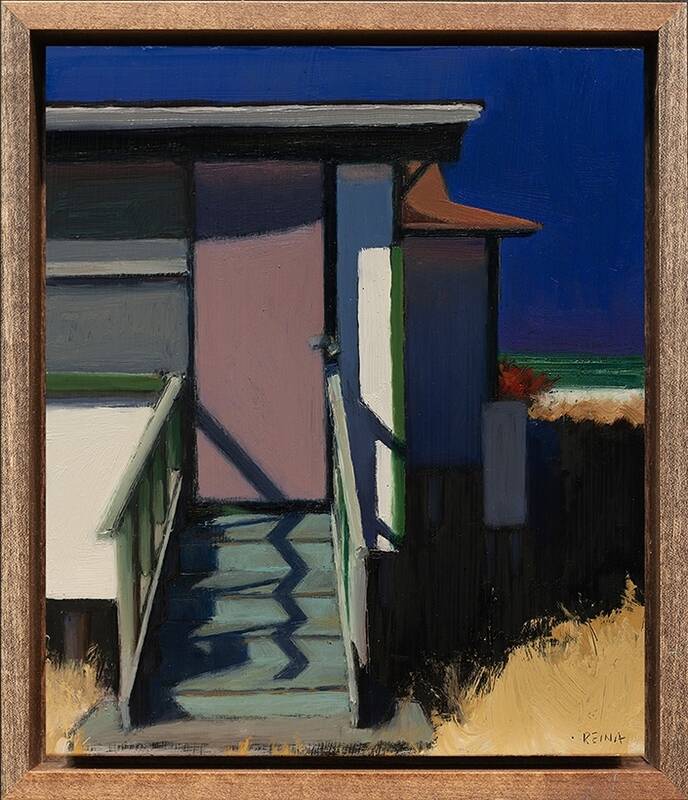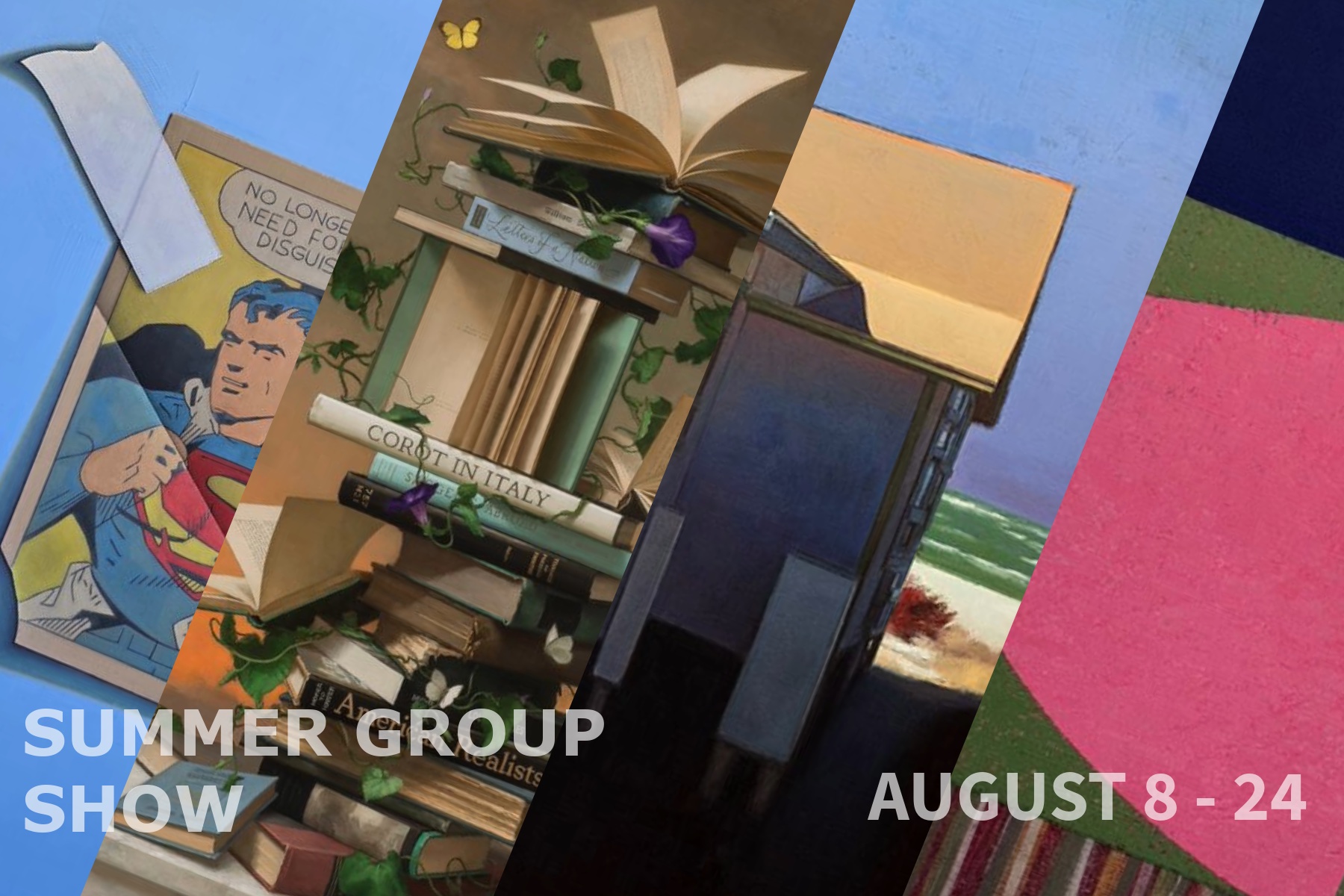
The Grenning Gallery is pleased to announce our Summer Group Show, showcasing the varied talents of Anthony Mastromatteo, Doug Reina, Steven Levin, and introducing Gene Johnson. Please join us and meet the artist at the Opening Reception, Friday, August 8th from 6:00 to 7:30 pm at 26 Main Street, Sag Harbor, NY, 11963. The exhibition hangs through Sunday, August 24th, 2025.
While these artists have diverse interests and ways of expressing themselves, we find similarities in their use of color, form, and content. The Grenning Gallery’s Summer Group Show this year has a retro, mid century aesthetic that calls our attention to angularity, symmetry, balance, while also highlighting the subtle impact of color in paintings. These painters remind us that painting, while technique is interesting to behold… it is also a form of media that can be utilized by the artist to communicate sophisticated and abstract ideas. To put it simply; a picture is worth a thousand words.
Anthony Mastromatteo’s (b. 1970, OH) thoughtful and hilarious trompe l’oiel paintings deliver dramatic pop art laced with political messages and philosophical questions. These paintings not only mesmerize us with his precise detail, but captivate our intellectual attention. Mastromatteo, cleverly, uses humor to disarm the viewer, making gentle suggestions that invite the viewer to investigate their own interpretation of the media he uses. Mastromatteo is a master of light, shadow, and realistic texture. Upon viewing these paintings, we see how they are truly a “trick of the eye”. Viewers are often deceived, and look at these paintings from the side, hoping to find the paper’s edge coming off the surface, only to discover it is, in true trompe l'oeil fashion, completely 2-dimensional.
In many paintings, Mastromatteo uses the iconic 1950’s DC comic cartoons as a vessel for his witty communication. The accessibility of the content Mastromatteo uses serves to draw in the unsuspecting viewer, and his unbelievable skill of representation holds their fascination long enough to stimulate questions: What does this mean? What is he trying to say? The subtlety of this messaging is what keeps Mastromatteo’s work engaging and interesting. Many “pop” artists choose to put it all out of the table, relying on shock, provocation, or boldness to grab the viewer. Mastromatteo is more subtle than this… He leads with a playfulness; the element of fun and humor in his work makes these paintings attractive and stimulating. How deeply the viewer chooses to engage with the ideas he communicates is up to them; the longer one stands in front of one of these paintings, the more there is to see.
Steven Levin’s (b. 1964, MN) paintings combine his impressive skill for realism with a flare for the surreal. Levin is part of a group of contemporary painters who choose to practice classical realist painting techniques, and as such, his grasp of realism informs his artistic choices. In other words, Levin knows the rules, and when he breaks them, we understand this is intentional. His unique compositions remind us of Rene Magritte in their whimsy, yet Edward Hopper in his ability to capture perfectly “American” moments. Levin also has the rare skill of recreating realistic and unique human dynamics through body language in his figurative works. In “Balcony” he is capturing the nuances of what, on the surface, appears to be a snapshot of a mundane social interaction. With a keen eye, we observe the two figures, she, looking off towards the horizon, lost in thought, he, looking directly at her from above. Her arms are crossed to him, turned away, while he braces the railing behind him, hand in pocket, open to her. The subtle indicators of emotion and attitude in his paintings is not only the hand of a skilled painter, but the eye of an anthropologist.
In this show, he reveals the newest of his ever popular Books and Butterflies series, the content itself a metaphor for the transformative influence of language and literature, a message in favor of education and refinement. Levin exhibits his talent and his well trained hand with these complex still lifes, and the scene is elevated by the strange liminal background, often a sunset and/or a water horizon. We find several artists in this show rely on the horizon line to stabilize a more unconventional composition, especially in the work of new artist, Gene Johnson.
While the paintings are literally representational, often depicting exteriors of buildings, corners, or unique architecture, Doug Reina’s (b. 1959, NY) strategic flattening of shapes and emphasis of lines and angles guide these paintings into the realm of delightful abstraction. If the viewer steps back and unfocuses their eyes, ignoring Reina’s skillful details, what one will find is a sophisticated composition of shapes, light, and shadow, not unlike Richard Diebenkorn’s earlier work. Reina chooses subjects and scenes that display sharp, dramatic lighting, which cast dark shadows, creating triangles and lines that interact with the rich local color blocking around it. The artist uses our distinct East End architecture and deep rich palette as fodder for his large scale paintings.
Reina’s precision as a painter is what qualifies this work to be included in the Grenning Gallery - but it is Reina’s ability to capture the emotion of our local East End essence, in these large scale canvases, which is something we have rarely seen! Reina’s series hints at the influence of Edward Hopper’s paintings, which captured glimpses into other people's lives he passed by in bustling New York City.
The Grenning Gallery is pleased to introduce Gene Johnson (b. 1945, NJ), who has been painting and showing his work in NYC and Mexico for over 40 years. Johnson’s geometric abstractions investigate shape relationships, balance, and color. Johnson’s surfaces are tactile, uniform, and shift from shape to shape, giving the composition 3-dimensional distinctions that go beyond the lines of separation. Though they appear completely abstract, these compositions are influenced by Johnson’s lifetime of access to the Mexican mountainscape, and we consider them to toe the line between geometric abstraction and a Diebenkorn landscape.
These paintings often, if not always, contain a horizon line to ground the space, poetically referencing realistic shadow and light. Viewing these paintings through this context creates a generous image. They transcend the graphic 2-dimensional composition we initially see, and open into an illusion of a landscape. The tension between subtle representation of real space, and abstract distortion made by liberal color and texture, is what makes these paintings grab one’s attention. When standing in front of Gene Johnson painting one steps forward, then steps backwards, and then one keeps coming back, reveling in the color and shapes.

